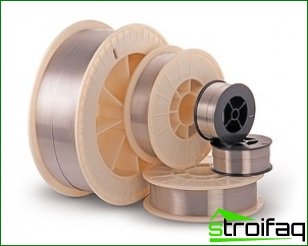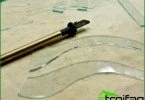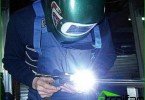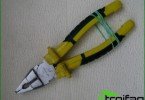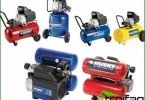Some technologies involve the use of metals and materials with high melting characteristics in production. To achieve the desired indicator, special equipment for welding, certain consumables and gases are used. The use of welding wire also plays an important role..
By using welding wire, the highest quality can be achieved when connecting parts. Therefore, we will consider the features selection of welding wire, because much depends on her. If this operation is performed correctly, you can get a seam of perfect evenness, which will be durable and resistant to corrosion and tearing, durable.
Different types of wire have their own characteristics.
When choosing such a welding material, it is necessary to take into account that today the welding wire is presented in several forms, each of which has its own characteristics: chemical composition, rod structure and alloying components. Such characteristics make it possible to classify the welding wire into the following types: with a small amount of alloying components, with a small amount of carbon; in addition, there is a material in which alloying elements are contained in a significant amount. These large groups include certain subgroups that determine the structural features of the wire..
Some technologies involve the use of metals and materials with high melting characteristics in production. To achieve the desired indicator, special equipment for welding, certain consumables and gases are used. The use of welding wire also plays an important role..
By using welding wire, the highest quality can be achieved when connecting parts. Therefore, we will consider the features selection of welding wire, because much depends on her. If this operation is performed correctly, you can get a seam of perfect evenness, which will be durable and resistant to corrosion and tearing, durable.
Different types of wire have their own characteristics.
When choosing such a welding material, it is necessary to take into account that today the welding wire is presented in several forms, each of which has its own characteristics: chemical composition, rod structure and alloying components. Such characteristics make it possible to classify the welding wire into the following types: with a small amount of alloying components, with a small amount of carbon; in addition, there is a material in which alloying elements are contained in a significant amount. These large groups include certain subgroups that determine the structural features of the wire..
In different welding processes, steel, copper-plated or deposited powder wire can be used. To determine the best type of material, you need to understand its labeling and familiarize yourself with it. It will allow you to determine the characteristics that affect welding processes.
If you perform submerged arc welding of especially important structures that you plan to operate at maximum loads, then the best solution would be to use a flux-cored welding wire. Thanks to it, it is possible to carry out a variety of production stages, involving the connection of steel products that are made of high-carbon metal. Structures that are processed by such a wire will be able to successfully transfer the effect of elevated pressure and temperatures when used..
If you plan to use a wire to connect products from low alloy steels, in this case, the best option would be to use steel material coated with copper. It will allow you to acquire additional protection for the weld, as well as prevent various destructive processes. The use of this type of material helps to increase the resistance of the welding arc and reduces metal spatter during welding. By means of a copper-plated welding wire, it is preferable to connect metals with a low content in alloy steel and carbon.
As soon as you choose the most convenient type of welding wire, you need to analyze the diameter of the material, on which the thickness of the materials used for welding will largely depend.
